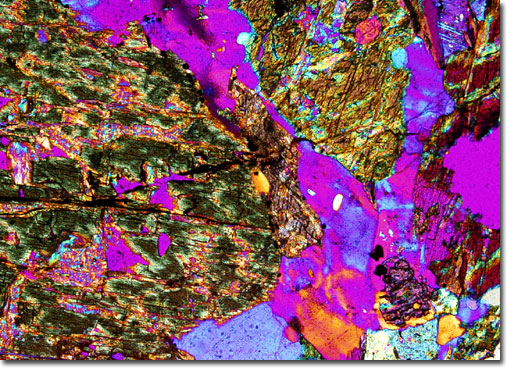|
Gneiss is difficult to describe because it varies to such a wide extent. Nevertheless, generally the rock contains relatively large amounts of feldspar and quartz, as well as mica or some other dark, rock-forming mineral. The bands of the rock, which is formed via high-grade regional metamorphism, may be nearly parallel to the ground or steeply angled. The precise orientation of the bands may be in some way determined by characteristics of the parent rock or the type of stresses undergone during metamorphism.
|
